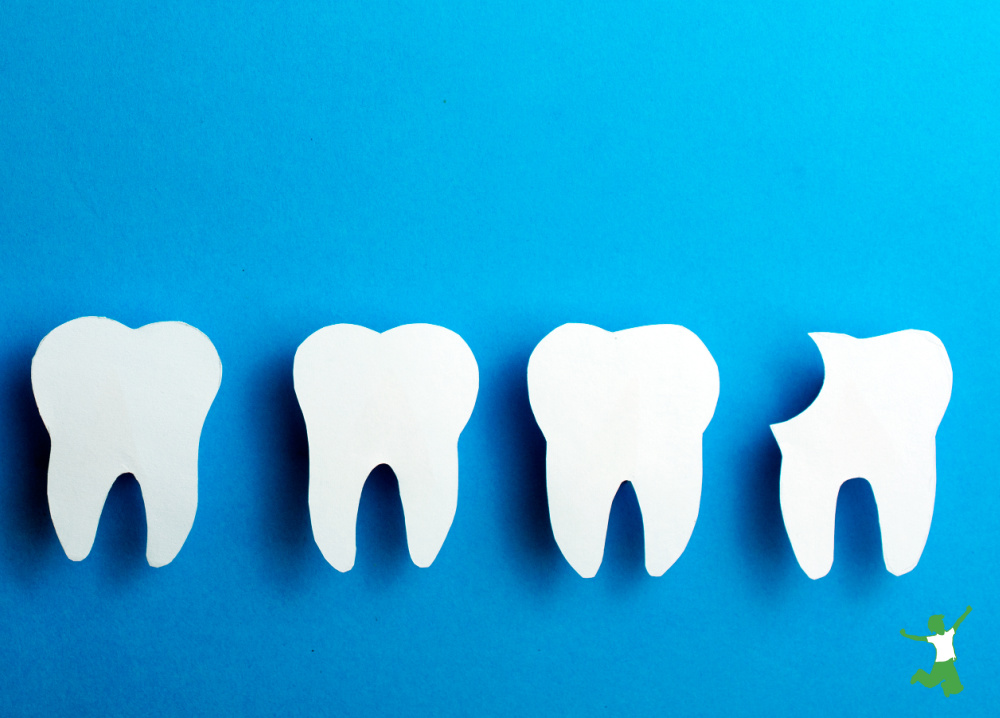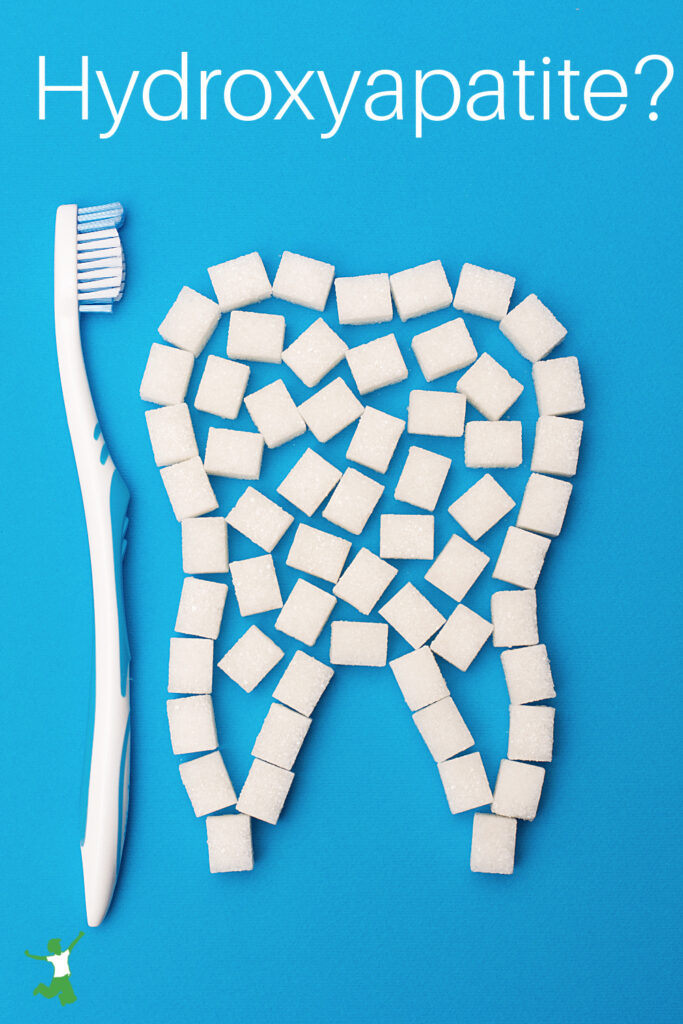Examination of the differences between microcrystalline and nano-hydroxyapatite for protection against dental caries and remineralizing the teeth.

A trend I have noticed in recent months is that functional doctors and biological dentists are increasingly recommending products that contain nano-hydroxyapatite to their patients.
What is hydroxyapatite, or “HA” as it is commonly abbreviated?
HA is quite simply ground bone with only the moisture extracted.
Nothing else is added or removed.
Hydroxyapatite Protects and Remineralizes Teeth
Research published in the scientific literature convincingly demonstrates that hydroxyapatite provides highly effective protection against dental caries. It also offers benefits for tooth remineralization. (1, 2)
In fact, the research clearly shows that hydroxyapatite’s protective effects on the teeth are as good or better than fluoride.
Thus, for those wishing to avoid the biological damage of fluoride exposure, hydroxyapatite is an excellent and safe alternative.
The question is, what type?
Is the nano-hydroxyapatite that is in a growing percentage of fluoride-free, remineralizing oral care products the way to go?
Let’s take a look.
Microcrystalline vs Nano
Microcrystalline hydroxyapatite is the form of dehydrated bone that is ground to as fine a particle size as can be performed mechanically.
Nano-hydroxyapatite is something else entirely…the particle size is massively smaller than the microcrystallized form.
How much smaller?
“Nano” is 1000 times smaller than “micro”. (3)
In fact, nanoparticles are so small that they can easily breach the walls of cells and even the nuclear membrane within a single cell itself…where DNA is located.
Benefits and Risks
While microcrystalline hydroxyapatite is 100% safe for use in oral care products (here’s where I get mine), it is best to avoid the nano version.
Research to date suggests that there are risks for mutations to DNA. This occurs from the breaching of the nanoparticles past the nuclear membranes of individual cells.
Please note that I am not questioning the research on nano-hydroxyapatite.
The benefits are quite compelling and credible in that it is indeed helpful in protecting against cavities as well as for remineralization purposes.
However, there is RISK in using nano-hydroxyapatite as well. Some alternative practitioners are glossing over these dangers by recommending products containing them.
In short, progress in the assessment of health risks from nanoparticles, aka “nano-toxicology”, is being far outstripped by the rapid advances in nano-technology itself. (4)
Thus, smart consumers would be well advised to use caution with products containing nano-hydroxyapatite else they are going to end up as guinea pigs for this technology.
While expected benefits from nano-hydroxyapatite may occur, the side effects could be far worse than tooth decay!
Some of the risks from nanoparticles are already identified in the literature. Dr. Al Danenberg DDS warns about these dangers which include cytotoxicity, damage, and mutations to cellular DNA. (5)
This occurs due to the breaching of the nuclear membrane (not just the cell membrane as discussed in the pro-nanoparticle research!).
Nano-Hydroxyapatite Is Not Natural
In short, where microcrystalline hydroxyapatite is a natural substance with a particle size that the body recognizes and can deal with, nano-hydroxyapatite is not.
Nano-hydroxyapatite is the synthetic form of hydroxyapatite with proven benefits but plenty of unknown risks to the integrity of your DNA.
The particle size of nano-hydroxyapatite (or any nanoparticle for that matter) is so tiny that it easily breaches the blood-brain barrier as well as the nuclear member protecting the DNA of every cell.
Summary
In closing, it is important to know that while studies show nano-hydroxyapatite to be efficacious, it has not been proven safe.
Thus, if you wish to enjoy the benefits of remineralizing hydroxyapatite in your oral care products, stick with companies that only use the microcrystalline form.
As of this writing, I only know of one company that offers these types of products.
This is the hydroxyapatite tooth powder that I use and recommend that contains the safe particle (non-nano) form.
Do you prefer to make your own tooth powder?
This bag of microcrystalline hydroxyapatite is perfect for the DIY oral care recipes you make at home.
Finally, what to do with practitioners who are recommending nano-hydroxyapatite products for you or your children?
If it were me in this situation, I would politely say no.
The medical research simply does not support the safety of nanoparticles for human DNA.

(1, 3) Nano or No-No? Hydroxyapatite Particle Size Matters…
(2) Scientific sources of Hydroxyapatite for Oral Health
(4) Nano-technology and Nano-toxicology
(5) Managing Health by Minding Your Gut (and Mouth) Microbiome (starting at 1:11)








Hi Sarah, do you have any other easy to follow articles discussing the reasons to be cautious about nano technology in general? I am trying to amass some resources on the topic and not finding much that provides a balanced view. Thank you so much!
Oh my yes! I started writing about nanoparticles in 2009 when I started blogging. It’s not new at all, but people are only starting to become aware of it.
They are in processed foods too to increase shelf life (unlabeled of course). https://www.thehealthyhomeeconomist.com/nanites-with-your-pizza-sauce/
The nanoparticles in food are technically called “nanites”.
It is my personal opinion (not yet supported in research if it is being researched at all!) that nanoparticles in processed foods is a BIG reason for the literal explosion in colon cancer in young people over the last decade.
In other words, eating food containing nanoparticles is a grave risk for mutation in the intestinal cells producing cancer.
I definitely want to try this but don’t totally understand how to use it. can you use toothpaste with the powder or do you just use the tooth powder and nothing else? The instructions on the back of the package seem a bit confusing to me.
If you are referring to the Shine tooth powder (which is what I use and suggest in the article), then you just use a bit of the tooth powder to brush your teeth (wet your toothbrush and put a little powder in your hand. You don’t need any toothpaste.
The brand that I’m currently used states that they use non-animal based “Biomimetic hydroxyapatite”. What does this mean as they can’t seem to tell me?
That seems like an alias for “nano” to me. I would steer clear if it was me, especially if they are not forthcoming when you reach out for more information!
I have been making my own tooth powder for years using NOW brand of bone meal
Powder. It doesn’t say Microcrystalline on the label, just hydroxyapatite. Is that the same thing?
Thank you.
If the label doesn’t specify what type of hydroxyapatite, my recommendation would be not to buy it. The risk is too severe from nano-particle exposure, in my opinion.
It is my experience over the years that when an ingredient is vague, it is vague for a reason …. to hide something!
I would recommend switching to Orawellness bag of hydroxyapatite. https://www.thehealthyhomeeconomist.com/go/microcrystalline-hydroxyapatite/
Hello, Sarah! Along the lines of nano ingredients, I recently noticed Redmond’s toothpaste, which I love, started adding nano silver a little while back. I try to stay away from nano anything, but curious if this research is regarding nano sized particles of any kind, or the nature of nano sized bone particles. I feel like I should switch away from Redmond’s. Would love your opinion and also love to know which toothpaste you use or if you make your own.
Oh my! That is a shame that Redmond is now adding nano-silver to its toothpaste! Personally, I would avoid anything with nano sized particles. It doesn’t matter what they are …. they can damage DNA.
I use the non-nano hydroxyapatite tooth powder indicated in the post. https://www.thehealthyhomeeconomist.com/go/shine-tooth-whitener/
I love the non-nano hydroxyapetite floss and Shine for tooth remineralization from OraWellness.com.
Me too! It is the best I’ve used!
The Just Ingredients brand tooth powder is not nano, they have it in the Q&A section for the tooth powder.
Thank you for sharing!
Good morning!
Thank you for still another health saving article!
Please can you recommend a safe vegan hydroxyapatite? Or a way to make our own?
Hydroxyapatite is by definition not vegan as it is made from animal bone. There is not a substitute.
I’ve been using Wellnesse toothpaste, their website has it listed as hydroxyapatite-micro. What do you think about this? Thank you!
This is good to know! Would like to point out Wellnesse also uses the correct form of HA.
Thanks for sharing!